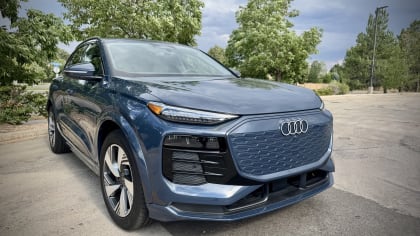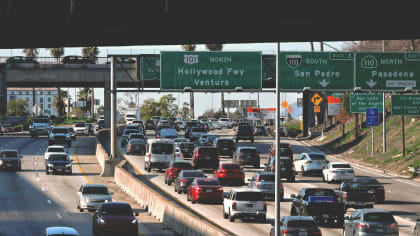56.2 MPG IS GOOD, BUT WE CAN DO EVEN BETTER?
This article is from our archives and has not been updated and integrated with our "new" site yet... Even so, it's still awesome - so keep reading!
Published on Mon, Jul 4, 2011
By: The LACar Editorial Staff

JIM GUEST: BACK SEAT DRIVING 56.2 MPG is good, but we can do even better Reports have recently leaked that the Obama Administration is targeting 56.2 miles per gallon as a new fuel-economy target for America's cars and trucks. Currently, vehicles from each automaker must average 27.3 mpg to avoid hefty fines, but that requirement is scheduled to rise to 35.5 mpg by 2016. It's what happens next that is now the focus of the government, the auto industry, environmental groups, and others. Proposals for 2017 through 2025 have ranged from 47 to 62 mpg. We agree that the 56.2-mpg standards are not only realistic, but should be the minimum target for 2025. It would be even better for consumers and the country to aim for the higher 62 mpg. At the same time, the government must limit loopholes to ensure compliance and the true accomplishment of the fuel-economy standards. This would further reduce the nation's dependence on petroleum, cut emissions, and help drivers go further on a gallon of gas. The leaks follow a Technical Feasibility Study the Administration conducted to determine whether the proposed standards are realistic. A final proposal is due in September, but the debate is well underway now with the auto industry arguing for a lower target. Improving fuel economy standards is one of the most effective ways to save consumers money at the pump. We believe that an aggressive standard with a long lead time for auto manufacturers will foster the development of better cars that use less gas at an affordable price. According to the Interim Joint Technical Assessment Report from the National Highway Traffic Safety Administration (NHTSA) and the Environmental Protection Agency (EPA), raising the Corporate Average Fuel Economy (CAFE) standards to 62 mpg would save owners about $6,000 in fuel costs over the lifetime of the vehicle, compared with current standards, and it would cut gasoline consumption by one third. A key sticking point in negotiations has been the cost of adding new fuel-efficient technology to cars, and whether consumers will bear that cost. In a recent survey of car owners by the Consumer Reports National Research Center, 62 percent of respondents said they expected their next vehicle to be more fuel efficient than their current one and 58 percent said that they would be willing to pay extra for that performance. As Consumer Reports' senior director of the auto test division David Champion says, "A minimum standard of 56 miles per gallon is definitely good for consumers, but 62 is even better. Technologies to attain this level of improvement are currently on the market today." They include hybrid, clean-diesel, and electric powertrains, direct-injected gasoline engines, advanced transmission designs, lighter-weight materials, and more efficient ways of powering engine accessories. We've found several current mainstream cars that already approach 56 mpg on the highway in our tests, including the Toyota Prius at 55 mpg, the diesel-powered Volkswagen Golf TDI at 49 mpg, and the Honda Civic LX sedan at 47 mpg. And as we celebrate America's 235th Independence Day, it is clear that without setting stretch goals, the United States will never be able to move away from our dependence on oil imported from foreign nations, many of which do not have our country's best interests at heart. We're confident that automakers can achieve these goals, which would be phased in over a time period that spans two or even three model generations. Importantly, we are also confident that 56.2 mpg average can be reached without compromising vehicle safety. And with Americans facing another summer driving season with gasoline costing $4 a gallon in many areas, we think, yes, 56.2 mpg is a number American drivers can get behind, but 62 mpg would be even better. Jim Guest, President Consumers Union Editor’s Note: Consumers Union publishes Consumer Reports. To view the Consumer Reports survey on gas mileage, click here.




